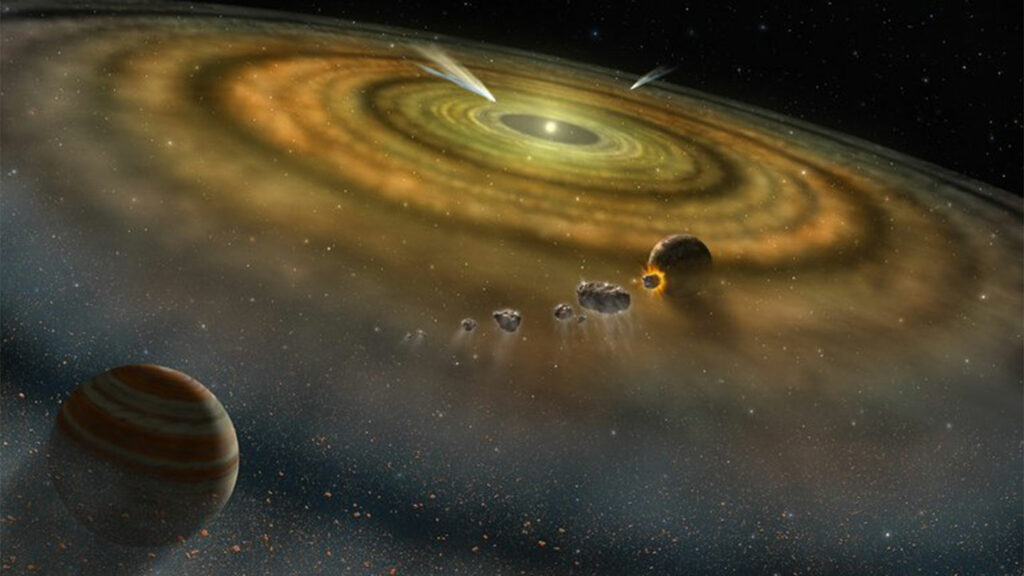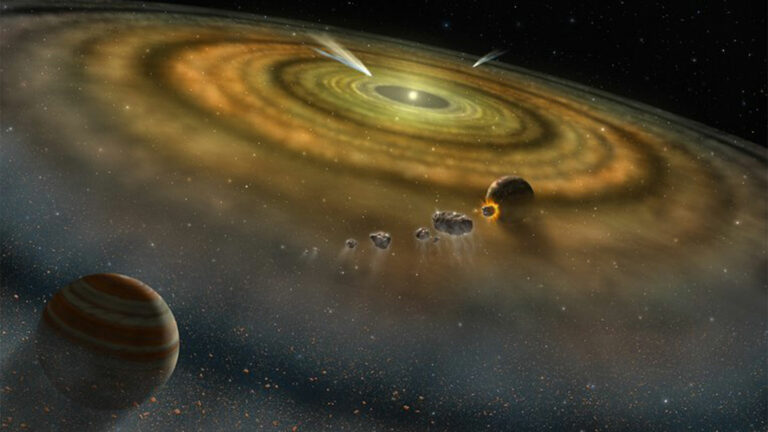The potential destabilization of a massive planet might have occurred concurrently with the formation of Earth’s moon.
The rearrangement of giant planets in our solar system in the distant past might have played a crucial role in the formation of Earth’s moon.
For years, planetary scientists have theorized that Jupiter, Saturn, Uranus, and Neptune originated much closer to the sun. It’s believed that gravitational interactions among these planets led to their current trajectories (SN: 5/10/22). However, pinpointing the exact timing of this “giant planet orbital instability” has been challenging.

A recent analysis of meteorite data, presented by planetary scientist Alessandro Morbidelli on October 5 at a meeting of the American Astronomical Society’s Division for Planetary Sciences in San Antonio, suggests that this instability occurred between 60 million and 100 million years after the formation of the solar system. This timeframe aligns with the estimated period when Earth’s moon formed following a collision with a Mars-sized planet.
Morbidelli, from the Observatoire de la Côte d’Azur in Nice, France, asserts that the giant planet migration is linked to a comprehensive reshaping of the solar system, including the creation of cometary reservoirs and the sculpting of the asteroid belt. Determining when this migration happened is crucial for establishing a milestone in the solar system’s history.
Initially proposed by Morbidelli and colleagues in 2005, the giant planet migration hypothesis is widely accepted in explaining various aspects of the solar system. While simulations indicate that giant planets typically form on closer-in, circular, and coplanar orbits, observations of other planetary systems and simulations of planet formation suggest that they eventually end up in their current orbits due to gravitational interactions.
Morbidelli’s recent findings challenge the previous belief that the giant planet instability occurred around 600 million years after the solar system’s birth. By examining a rare type of meteorite called EL enstatite chondrites, Morbidelli and his team propose that this instability occurred between 60 million and 100 million years after the solar system’s formation.
The study relies on the analysis of enstatite chondrites and computer simulations, with Morbidelli suggesting that the giant planet instability is the most plausible explanation for the presence of certain asteroids in the asteroid belt. This timing, between 60 million and 100 million years, makes the instability a leading candidate for the event that diverted a hypothetical planet, leading to the impact that created Earth’s moon (SN: 3/15/23).
While some scientists find Morbidelli’s estimate compelling, others caution that it’s based on limited data and emphasize the need for further reconciliation with other aspects of the solar system’s structure. Despite the ongoing discussion, this new insight offers a valuable perspective, grounded in real data rather than relying solely on computer models.
Do not forget to share your opinion with us to provide you with the best posts !





0 Comments